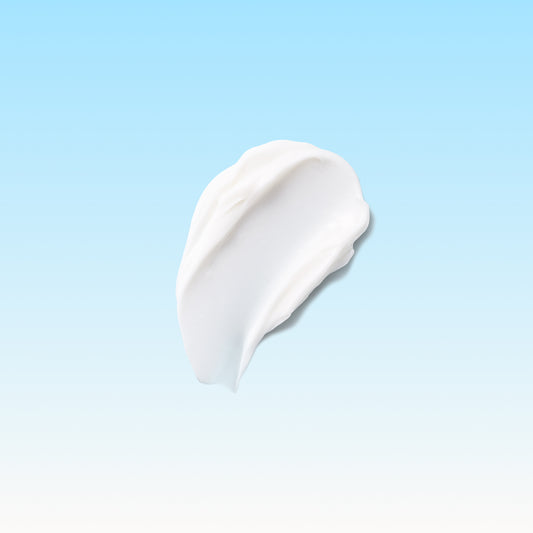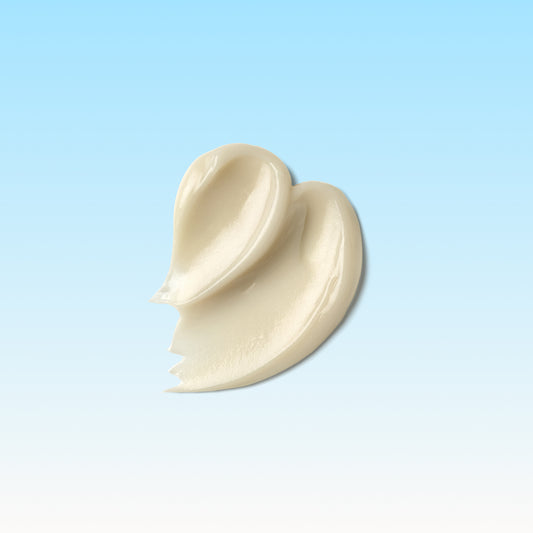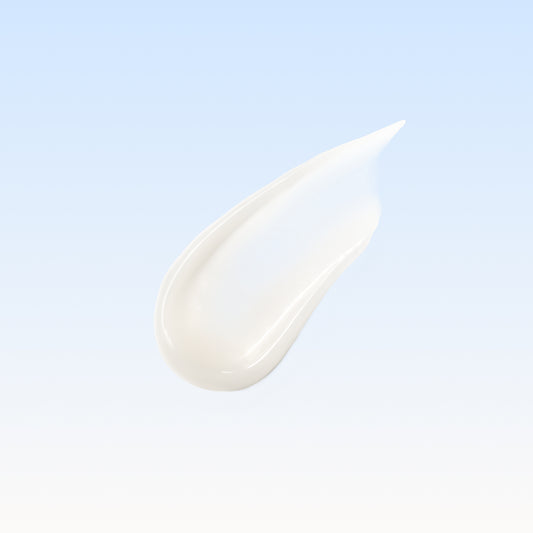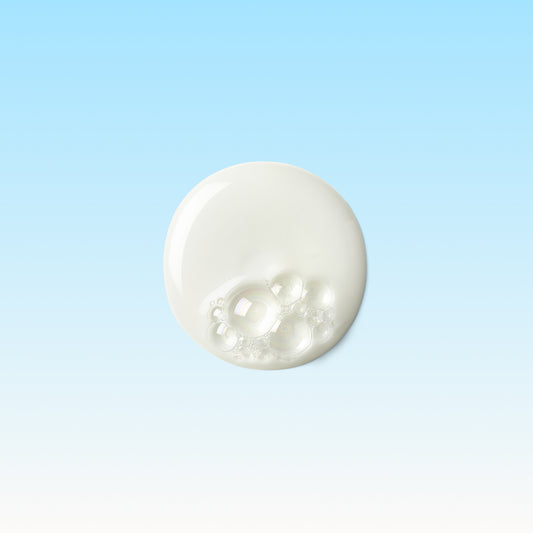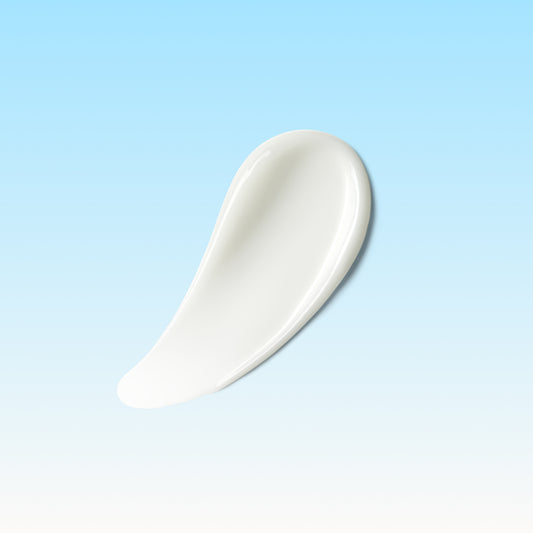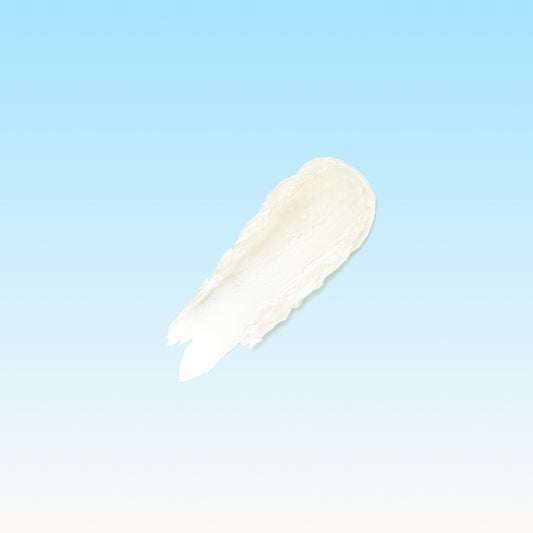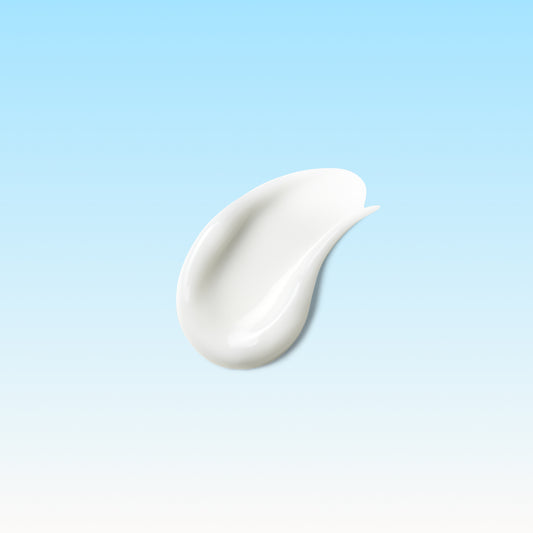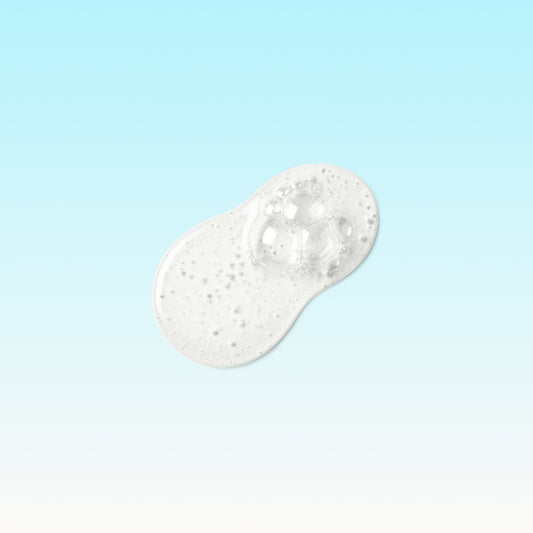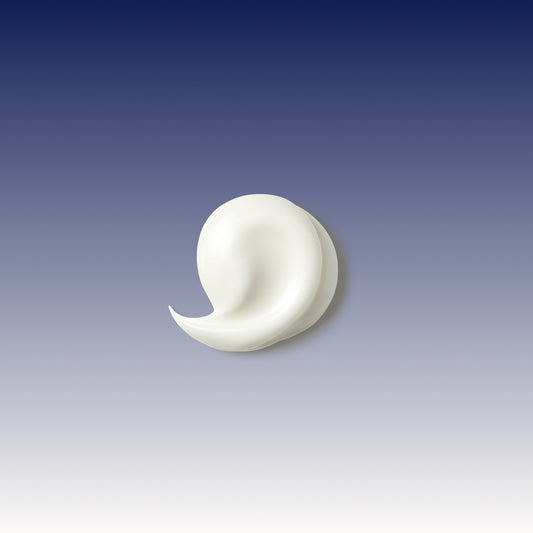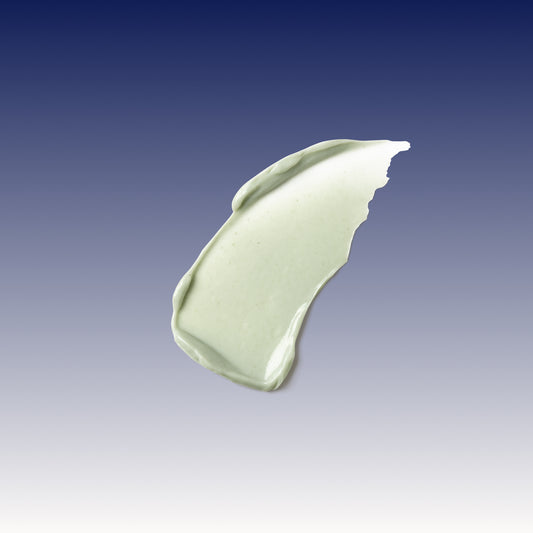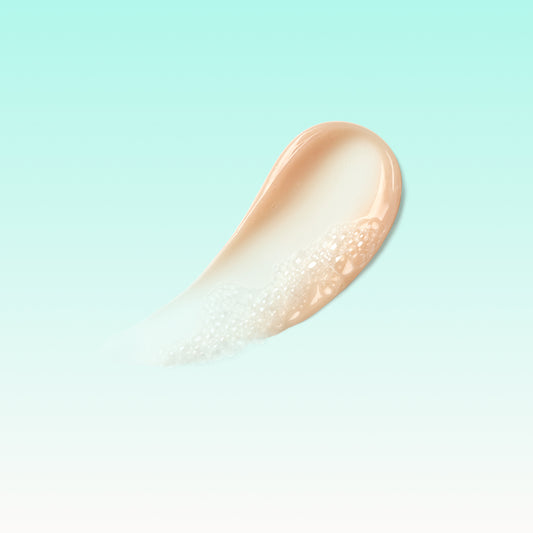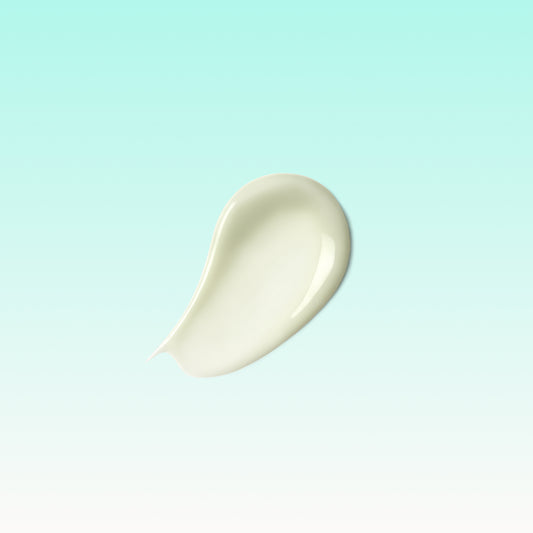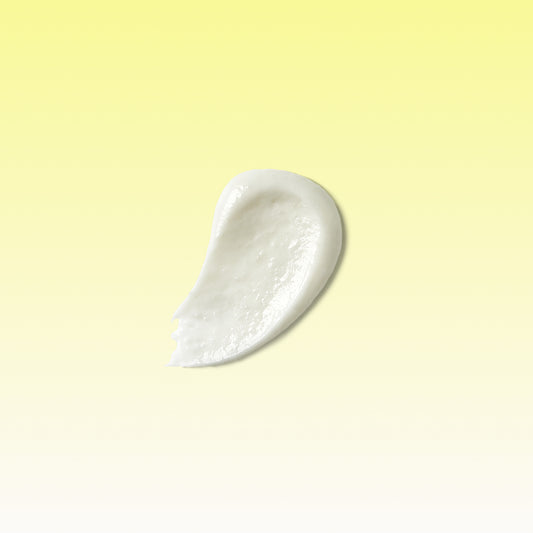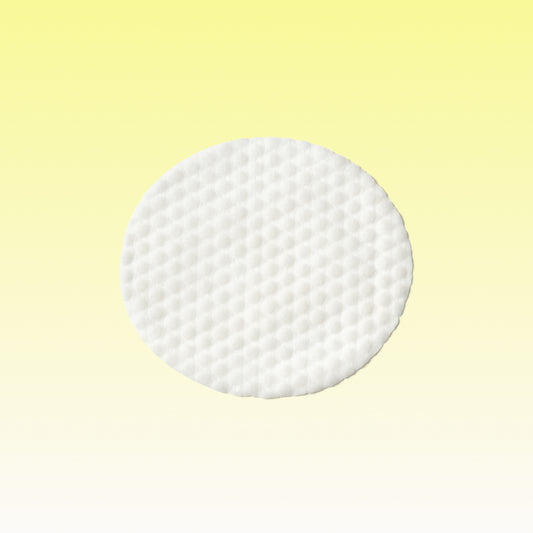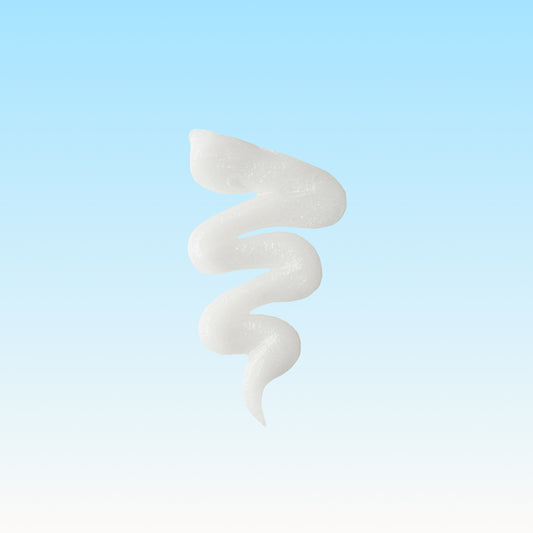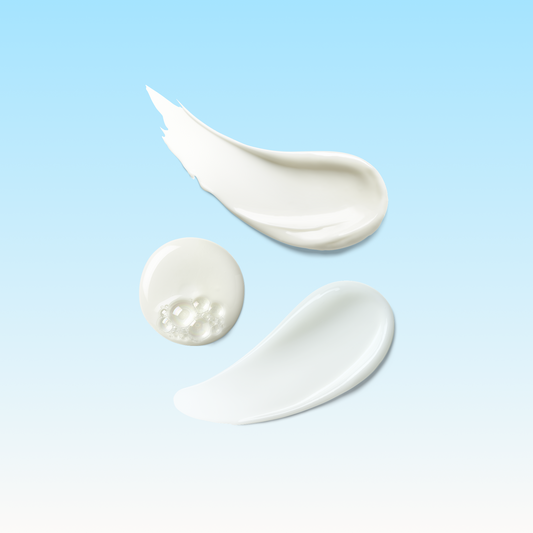S1:E1 Crusading Against Skin Cancer
[Amy Risley] Total Skin Nerds is brought to you by Skinfix. We're clean, clinically active, and on a mission to help heal your skin.
Hey, guys. It's Amy Risley, Skinfix founder and host of the show. I'm just dropping in with an important pre podcast note. We started taping Total Skin Nerds during the winter before COVID-19 changed the conversation about pretty much everything. Our aim then was to make a show based on the idea of caring for our listeners. COVID-19 has only reinforced that. Skinfix has always been about healing. We take it seriously and we're committed to making Total Skin Nerds a show that helps throughout this difficult moment and beyond.
Welcome to Total Skin Nerds. I'm Amy Risley, the CEO of Skinfix and a first rate skin nerd myself. I'm so excited to be hosting this podcast where we'll feature in-depth conversations with top doctors and skin care authorities who are on a crusade how skin is cared for, treated, experienced, and talked about.
This season on each episode I'll be joined by one doctor on a mission and we'll explore their medical focus, comprehensively and compassionately. And we'll offer actionable advice about the skin care topics that affect you from acne to eczema from inflammation to stress.
This time my guest is Dr. Ellen Marmur, a board certified dermatologist, a highly skilled mole surgeon, and one of the leading skin cancer experts in the country. Dr. Marmur is also a four time skin cancer patient who now works diligently to raise awareness about the disease all around the world. Stay tuned now as Dr. Marmur joins me in New York to discuss her own prognosis and everything you need to know about skin cancer prevention, treatment, recovery, and much more.
Stick with me, nerds. Don't go away.
[Amy Risley] So, welcome, Dr. Ellen Marmur to Total Skin Nerds.
[Dr. Ellen Marmur] My pleasure. I'm happy to be here.
[Amy Risley] We're so excited to have you here and really excited to do a deep dive on this subject of skin cancer. You are a survivor and you obviously a doctor that deals with it a lot. And so we want to do a deep dive and tell our listeners all about what to look for, how it's treated, what to expect, how to prevent it, everything that we can do related to the condition.
[Dr. Ellen Marmur] So, I had four skin cancers on my face so far starting about 10 years ago when I had just had my first child and had a skin cancer on the side of my nose. And then within two years I had another one under my eye on the opposite side. And then about six years ago I started a philanthropy called, Skin Cancer Take a Hike.
[Amy Risley] Yes!
[Dr. Ellen Marmur] And the reason for that was because after you have skin cancer you become afraid of the sun and you become afraid of all the controllable risk factors. But I also had a bunch of little kids and I wanted to enjoy my life to the maximum so there's that paradox of, "How do I protect myself and my children, but yet enjoy this wonderful world we live in?" So hiking is one of my favorite things and I started this hike to raise money for skin cancer prevention with big shade structures in parks and places where kids play. And also there's one at the Washington D.C. zoo and different community's can get grants for sun protective educational programs and structures. And I felt like prevention was the one thing that we all can do by taking care of ourselves. We don't have to wait 30 years for research. We can change different tiny behaviors and protect our skin and hopefully reduce our risk of skin cancer.
I know my risk was from growing up in Happy Valley, Pennsylvania on the swim team and always outside. All summer long. I would have competitions to see who could get more tan and who could get more sun burnt and who could have better tan lines and all that stuff all through high school. And then after college I led canoeing trips so I was a wilderness canoeing trip guide for a couple years out in Minnesota and Canada. Then, ironically, on our last Skin Cancer Take a Hike in Iceland I had two spots pop out on my face.
So these hikes are 100% outside, obviously, for long periods like a week at a time. And even though I was wearing sunscreen I may not of been wearing enough because it's cold in Iceland and I kind of felt like it's not hot and sort of loosened my own discipline. Got off trail, looked in the mirror, saw two bumps that weren't there a week ago.
[Amy Risley] Tell us what those bumps look like.
[Dr. Ellen Marmur] Yes.
[Amy Risley] What are we-
[Dr. Ellen Marmur] On the basically tip of my nose, right where the world is going to see, I had a little sort of white bump. And it didn't come to a head. It was firm. It wasn't really pearly, which skin cancer, basal cell cancers, are supposed to look kind of pink and pearly. But it wasn't there a week ago.
[Amy Risley] Okay. So that's something to think about? If something pops up that wasn't there before?
[Dr. Ellen Marmur] Yeah. So it pops up and in you're mind you're like, "I don't know. Did I scratch? Did I cut? Did I have a bug bite?" Or something. There's always some type of thing you're thinking maybe it is. But then it doesn't resolve. So it just pops up and kind of stays there. And so I tell my patients you know your body better than anybody. 80% of skin cancers are found by the patient, not the doctor. And so you kind of know when something hits your radar like, "That's weird." So once that happens, once you detect something sort of kind of interesting keep an eye on it. And if it doesn't resolve within two to three weeks then see your dermatologist.
[Amy Risley] Meaning resolve like come to a head, go away?
[Dr. Ellen Marmur] Mm-hmm (affirmative). Like a zit would do something. Like you're used to your pimples without picking it so if it comes to a head and resolves and maybe there's a little redness left over that's a pimple. But if it's a brown spot that's there and maybe even growing, definitely have it checked out.
So then I went to my own office and I had Dr. Jackie Berliner, who's also a Mohs surgeon, which means a skin cancer surgeon. I had her use this special device called a dermatoscope and look at my skin cancers up close. And so this special scope is like a magnifier and a polarizer. And it's a device that allows us to see patterns on top of the skin and also a little bit under the skin. And helps us understand the difference between something that's benign or something that's suspicious for malignancy.
So right away she did two biopsies. They both came back positive for basal cell cancer. So one was a pigmented dark basal cell cancer. And one was, the worst kind, which is called morpheaform, or scar like basal center cancer. And those are the kind that can take 11 stages of skin cancer surgery to remove. They can make us have to remove the entire nose, which would require a major reconstruction.
[Amy Risley] So, how did you feel at that moment knowing what the prognosis could be?
[Dr. Ellen Marmur] You know I think immediately it's taught me a lot about cancer at large. So skin cancer is the most common of all cancers added up. So breast cancer, pancreatic cancer, lung cancer, prostate cancer. All those cancers added up are less than skin cancer. And people think skin cancers are benign, but I've had patients die from skin cancer. It's a deathly disease so it's something that we have the opportunity to look at this organ of our own skin. You can't look at your liver. You can't look at your heart. You can't look at your brain. But you can look at your skin.
So, I went into... I was kind of relieved to know what it was.
[Amy Risley] Okay. And that you caught it quickly?
[Dr. Ellen Marmur] Caught it right away.
[Amy Risley] Because it had just popped out.
[Dr. Ellen Marmur] Yeah. So relief and then function. I was like, "Okay. I know what to do. I'm going to make an appointment with my dermatologist, Dr. Jackie Berliner. I'm going to go in. I'm going to have Mohs surgery." At the time I extrapolate it I'll probably need total reconstruction of my whole entire nose. And then I got in touch with a bunch of different plastic surgeons to see who was the best at that type of reconstruction.
[Amy Risley] And do they do that immediately after the Mohs? Does that all happen under the same anesthesia? Or does it happen in stages?
[Dr. Ellen Marmur] Usually the Mohs surgery is unpredictable how long you're going to be at the office in terms of how many stages you're going to do. But oftentimes what we'll do is plan on Mohs surgery in the morning and then sometime in the afternoon it will switch over to the plastic surgery reconstruction. Or it can happen the next day. Or in certain situations it can even happen a week later. So it's a little bit of a juggle.
So for listeners who are approaching this or have to go through it, the guidance of your Mohs surgeon is very important and the Mohs surgeon can either do the reconstruction themselves. Or if they feel that a plastic surgeon would be better for you they often have a relationship with good plastic surgeons. And they can help you out.
[Amy Risley] You talked about earlier, when we were in the kitchen, about how you kind of didn't realize the gravity of it all until it had all gone down. And it had all happened and then you thought, "Oh, my gosh. That was major surgery I just had."
[Dr. Ellen Marmur] Yeah. It's a big deal. The first two skin cancers I had on my face were small and I was so busy with raising my kids I just like had them, dealt with them, and that was it. It didn't make a huge... I did actually talk about leading to sort of my early mid-life crisis because I realized that part of me could break without me knowing it. And if that could happen on my face or skin, what else is happening in my body? And that did make me feel very committed to carpe diem. So that's what the first skin cancers did for me. The second skin cancers were painful. The surgery was near my eye and my middle of my face and I was very very swollen. And then I had to have a graft taking from my eyelid to put on the deep wound in my nose. And it just was kind of debilitating and it just hit me really hard, emotionally.
And it still does because it's a drain to have a scar on your face. For me I'm a dermatologist. People come to see me for all kinds of things but one thing is cosmetic so I'm walking in the room and already I'm slightly disfigured, you know? But you can't hide it and I'm surprised how other people respond. 99% of people are like, "Are you... But you're okay, right?" That's all they care about.
[Amy Risley] That's what they're concerned about.
[Dr. Ellen Marmur] So wonderful.
[Amy Risley] I can't even see it and I wouldn't of known unless you had pointed it out. They did a great job.
[Dr. Ellen Marmur] For everyone, it's like the size of a dime on my nose. But there's a study that shows that 7% of people would rather not have surgery for a cancer than have a disfiguring scar. And over 40% of patients would risk a higher risk of death than have a disfiguring scar on their face.
[Amy Risley] Speaks to sort of the psychological and emotional impact of how we look.
[Dr. Ellen Marmur] Yeah. And so vanity is not a word that I ever use. I think that to care about how you look and to care about your skin and to do self care is healthcare.
[Amy Risley] Yes.
[Dr. Ellen Marmur] It is a very functional motivation. Taking care of yourself, having a routine, having a skin care regimen, having good behaviors consistently in your life is money in the wellness bank. It's all going to help over time.
[Amy Risley] So, in terms of skin cancer are there certain ethnic groups that are more prone to skin cancer than others? Are there any links?
[Dr. Ellen Marmur] Yeah, of course. The number one myth that you all know is that people who have any dark color to their skin, so typically the Asian, Hispanic, anybody with darker skin thinks that, or even my patients say, "Oh, I'm Italian. I tan easily. I'll never get skin cancer." But that's a myth. A widely known fact is that Bob Marley died from melanoma on his toe that he did not want to have treated. So skin cancer happens in people of all colors, people from all countries, and it's partially genetic. And the risk for skin cancer in people of skin of color is typically a squamous cell cancer. Whereas in Caucasians, or very pale skin, it's basal cell cancer.
[Amy Risley] So, explain the difference between those two.
[Dr. Ellen Marmur] Okay. The three most common skin cancers are called basal cell cancer, squamous cell cancer, and melanoma. So people always say, "Is it squamous or squaemous?" [crosstalk 00:13:37]. And really the skin is made up of two layers, not seven, people always say, "Is it seven layers?" It's the epidermis, which is the part you touch. So if everybody touches their skin right now they're touching their epidermis. And under that, like if you cut yourself and you bleed and you see underneath the skin, it actually looks like milky white, that's called the dermis. And that's where all your collagen is.
And so in the epidermis there are then it looks like a brick wall of different cells. And as they grow upward we change their names. So the cells of the very base of that are called the basal cells and that's where basal cell cancers begin. And then as those basal cells mature they become squamous cells. And that's where squamous cell cancers begin. And that's why they have different names.
Every 10th cell, if you think of a picket fence, every 10th cell in your body is a melanocyte and those make melanoma. But their happy function is to make melanin, which is pigment. And so that's why those are the three main types of skin cancers named after those cells.
There are also nerve cells in the skin and those make merkel cell carcinoma. There are also oil glands in our skin and those make sebaceous cell carcinomas. So those are some less common types of skin cancers.
[Amy Risley] Okay. And so you were saying the sort of lighter skin tones would be more the basal? And then people with more melanin are typically more squamous?
[Dr. Ellen Marmur] Exactly.
[Amy Risley] Okay. So let's talk a little bit about the different types of cancer and really dig in a little more into sort of the levels of severity. And are there certain types of cancer that are faster moving or more dangerous than others? Can you talk to a little bit about that?
[Dr. Ellen Marmur] Definitely. So just in the past few weeks I've diagnosed some brutal skin cancers that make me existentially concerned. So there's one that it looked like just a red M&M on somebody's forehead. And it is the kind of cancer that I immediately refer that person to [inaudible 00:15:46]. It's not good. And another person had sort of like a brown pink plaque that looked like an age spot like all his others. And that was a amelanotic melanoma.
So the first one was merkel cell cancer, the second was amelanotic melanoma. Another patient had some blood vessels and some scaly stuff and had a history of squamous cell cancer. So I did a biopsy thinking it was going to be squamous cell cancer and it was something very rare called angiosarcoma.
So these are the kinds of very aggressive, unpredictable cancers that we kind of know statistically are very aggressive. And so we treat them very aggressively right away. The basal cell cancers are typically... Basal cells and squamous cell cancer are the two most common, as I talked about. And they do different kinds of growth patterns. They tend to do what's called a radial growth phase. They start at the surface of the skin. They grow wider and wide, like an oil slick, that's called a radial growth phase. They radiate superficially. So you end up seeing them and being like, "This is weird." And then it gives us a chance to biopsy and take care of it. They do a radial growth pattern before they do a vertical growth pattern. And that means when they start to dive down hair follicles and down into the skin and start to invade. And the second they get through the epidermis, which you can touch yourself, through the dermis, which is that milky white skin that you see if you cut yourself, into the area where there are blood vessels and fat that's when they can fly.
So the skin barrier and the protection that good healthy intact skin barrier is a physical defense. And it's also an immune defense. It can see bad things. It can kill it. So when I say the body is constantly repairing, we know that pre-cancers, they're called actinic keratosis, 90% of them are killed by your own body.
[Amy Risley] Wow!
[Dr. Ellen Marmur] Before any doctor sees them or anybody sees them. We know this now about breast cancers. A lot of cancers are occurring on a small level on your body. As long as your healthy, you sleep well, you eat well, you exercise, you keep yourself strong you're killing cancers every single day. So the pre-cancers, 90% of them will go away by themselves. The 10% that are persistent take about two years to become an invasive skin cancer. And I actually published that research many years ago.
So you have two years for these pre-cancers to become more invasive and mature on most skin cancers. And that's why skin cancer surgery is so important to get rid of them right away. Even if you have a scar because you want that gone before it has a chance to get down into the easy highway into the body, into the lymph system, and into the circulation. And then it just spreads. And then it's very hard to detect and to target all at once because it's just all over the place.
[Amy Risley] Right. So you want to get it before it gets there.
[Dr. Ellen Marmur] Yeah.
[Amy Risley] And then what are the different stages? Is it similar to other cancers where there's sort of a stage one, two, three, and four level of severity?
[Dr. Ellen Marmur] Yes, it is. We do have staging systems. Mainly for squamous cell cancers and melanoma. And also for the merkel cells and other cancers. And typically like all cancers staging is about has it invaded it's local area? Has it spread to lymph nodes? And has it spread beyond lymph nodes, from local lymph nodes to regional lymph nodes? And then has it gone into other organs? And most of us, after the age of 40, have heard of people close to us who have passed away from melanoma in the bladder, in the lung, in the brain, in places that you just wouldn't even imagine that there are melanocytes. The second most common spot of melanoma to originate, not the skin, is the eye.
[Amy Risley] In the eye itself?
[Dr. Ellen Marmur] In the eye.
[Amy Risley] Okay.
[Dr. Ellen Marmur] So there's a place called the uvea of the eye. So, sunglasses are another really important thing big, wonderful, dark sunglasses are really helpful.
[Amy Risley] Polarized, is that important?
[Dr. Ellen Marmur] Mm-hmm (affirmative). Yes.
[Amy Risley] What happens after you've had a diagnosis and you've had treatment for melanoma? Then what do you need to do to sort of follow up to make sure it's not moving through the system.
[Dr. Ellen Marmur] Get it taken care of immediately. So timing is everything with skin cancer. Treatment within the first 30 days of diagnosis of a primary melanoma on the skin is life saving. So do not delay. And this is why everyone should have a dermatologist in your life. You should have an appointment already at a local dermatologist. And you can find the name of a good dermatologist at aad.org or asds.net. Make an appointment even if it's just for a wellness visit, who cares? But then once you're in the system if you ever find a spot, you wake up and you're like, "I don't remember this spot on my toe." Or, "I don't remember this spot on the back of my knee." Or, "I don't really remember this... There's a bump on the back of my head I can't see." You can call that day and you should be seen within 48 hours.
[Amy Risley] And then does it become a regular checkup sort of every six months or a year?
[Dr. Ellen Marmur] Mm-hmm (affirmative).
[Amy Risley] To keep going throughout your lifetime?
[Dr. Ellen Marmur] Yes. So the normal checkup is once a year you're seen as a happy patient who's never had skin cancer. And we look at you from head to toe. So we look at your scalp, through your hair, on your eyelids, inside your mouth, in your nose.
[Amy Risley] Inside your mouth?
[Dr. Ellen Marmur] Inside your ears.
[Amy Risley] Okay.
[Dr. Ellen Marmur] Your whole neck, under your arms, under your breasts, in your groin.
[Amy Risley] It is a full visit.
[Dr. Ellen Marmur] I've seen more naked people than all the listeners combined. So that's what we do. We do exactly the same exam on everybody. And we look between your toes and if you have any spots, write them down on a little piece of paper so you don't forget and make you double check everything. And that's happy people once a year. If you've ever had skin cancer we like to see you three months after we treated your first skin cancer for another full skin check. And then if it's been a basal cell or a squamous cell cancer then you go out to six months and then back to once a year if you haven't found anything.
If it's a melanoma you do every three months for a years then every six months for a year. So your second year is every six months. You also have your eyes checked by an ophthalmologist once a year to look for pigment inside your eyes. Your gynecologist should inside the vulva and any area there because the mucosal surface can have skin cancers there. And the dentist should be looking inside your mouth for whites, reds, and browns.
[Amy Risley] Tell us about Mohs surgery. What is that all about?
[Dr. Ellen Marmur] Okay. Mohs is spelled M-O-H-S and it's named after one of the pioneers in this type or surgery, Frederick Mohs. And it's been around since the 1950's. Mohs surgery, it combines in one person, so I'm a Mohs surgeon. So I'm the dermatologist who does the skin check, detecting skin cancers. I biopsy it then I become the surgeon who excises the skin cancer. And then I become the pathologist where I'm looking at all the margins of that piece of tissue while you wait.
And so the procedure that we use to cut the tissue and make the slides is like peeling an orange. So I'm looking at 100% of the circumference of that orange. So if there's any skin cancer tracking through I'll find it. And I've created a map so I can come back to the patient and I have my map where I have, let's say, north, south, east, west quadrants that are blue, yellow, red, green ink. So I have a very accurate way of correlating what I found on the slides, as a basal cell or a squamous cell. I can come back to you, as the patient, and take only what's necessary in that particular quadrant.
So it's not like plastic surgery where you have to guess and take a larger margin and then send it out to a lab and come back a week or two later and then say, "Oh my gosh, we found some skin cancer. We have to do it again." Or the other problem is a false negative clear margin diagnosis. So if you have skin cancer and you have a non Mohs surgeon take it out, they'll cut it out, sew it up, send that piece to a pathology lab that will not peel it like an orange like we do, but they'll cut it like a loaf of bread. Take out two or three slices randomly. And just look at the crust on that bread. Just the toast. So they're only looking at a small percentage of that tissue. So it could miss skin cancer that's still left in your body. So you have a hire chance of reoccurrence.
[Amy Risley] So what percentage of dermatologists doing skin cancer surgery are Mohs surgeons?
[Dr. Ellen Marmur] That's a good question. I would say about 15%.
[Amy Risley] That's it?
[Dr. Ellen Marmur] Mm-hmm (affirmative). It's a pretty small subset. It's all over the world. In fact when we went to climb Mt. Kilimanjaro I was lucky enough to visit a small lab there. And we call it a lab because you have to have a pathology lab. And the Mohs surgeon there worked with Africans who have albinism. And so they have no pigment in their skin and they did by the age of 25 based... This is a genetic disease where they have no melanin and they're in hot African sun and don't have have a lot of sun protection. So they started a whole program there making sunscreen. Literally making it in the lab. So I was in their sterile lab helping them make sunscreen. Then they have a bus that goes out to all these villages and gives people sun protection. And they only get new sunscreen if they show that they've used up the old ones.
[Amy Risley] Oh, wow.
[Dr. Ellen Marmur] So they recycle the containers. It's amazing.
[Amy Risley] Very cool.
[Dr. Ellen Marmur] And then they get free skin checks. And then skin cancer surgery.
[Amy Risley] What is the name of the organization?
[Dr. Ellen Marmur] In Moshi, which is a small town at the base of Kilimanjaro there's a place where it's called the Kilimanjaro Sunscreen Production Unit. Where they produce 15,000 jars of their sunscreen, which they call, Kilimanjaro Suncare or Kilisun. And it largely based on donations from big companies who donate active ingredients for the sun protection. And then in a sterilized room a woman named Cocoa actually taught me how to make their sunscreen where she literally in what you would make pancakes in was making the ingredients and putting in the vehicle, so the cream, and mixing it in mixers. And then ladling it into white plastic jars.
[Amy Risley] 15,000 jars. That would take a long time.
[Dr. Ellen Marmur] It took a long time [crosstalk 00:26:31] and it's the most amazing place. And it's at the Tanzania Regional Dermatology Training Center. And the woman who runs it is a pharmacist who came from Spain and her name is Dr. Malfada Soto Valdes.
[Amy Risley] Tell us about, in your mind, what is the ideal sunscreen protocol? A lot of people talk about sunscreen and how to use it, but I feel like we still don't really know what to use? How much to use? How often to reapply? I was talking to my mom the other day, who lives in Laguna Beach, and she's using an AHA and I said, "Are you using sunscreen?" She said, "Oh, I don't use it every day." She lives in Laguna Beach.
[Dr. Ellen Marmur] Wow.
[Amy Risley] I was like, "Susie."
[Dr. Ellen Marmur] Susie.
[Amy Risley] Hello, Susie! But she said, "It's in my CC cream." So what is your thought on sunscreen in makeup versus sunscreen that's standalone that you're reapplying?
[Dr. Ellen Marmur] Sunscreen is our number one defense. Other than not being out in the sun excessively.
[Amy Risley] Right.
[Dr. Ellen Marmur] Sunscreen is, I guess, our second defense. And so what I like to tell patients is opt for the mineral based sunscreens, so the zinc and titanium. Hopefully those aren't absorbed as much just based on molecule size. And vary your sunscreens. So have a variety of different sunscreens for your face versus your body.
[Amy Risley] And why is that?
[Dr. Ellen Marmur] Because some days are cool days where you could use an SPF of 30. Some days are hot, crazy, sweaty days and you're going to be not wearing a ton of clothes and you need a really easy... Make it easy on yourself. Have product placement, I call it. Have a basket of sunscreen by your door and grab one. Or have a quick spray that goes on invisibly and just make it easy on yourself and on your kids and on your husband. Have big hats around. Just have it easy because how many of us have gone to a baseball game and forgotten our sunscreen?
[Amy Risley] A 100%.
[Dr. Ellen Marmur] Or we forget to reapply if we're in the middle of playing tennis and we forget to reapply. Or if we're at the pool and we feel the heat on our back but we didn't put on a shirt. So just have a center, have several different kinds of sunscreen, have a big hat, and plan your day a little bit better. Where you're not arriving at the beach or the pool at 10:00 A.M. even though you had a slow morning because you're going to get burnt from 10 til two. Just be thoughtful about it.
Your mom's cc cream is a good start because it does have an SPF in it.
[Amy Risley] It's better than nothing.
[Dr. Ellen Marmur] Good job, Susie. But it's probably she's not smearing it all over her body. So don't forget your ears and the area around your eyes. Eyelids get skin cancer a lot. Neck, all the time.
[Amy Risley] And how often reapplying?
[Dr. Ellen Marmur] I tell people when you're super hot to reapply every 30 minutes.
[Amy Risley] Okay.
[Dr. Ellen Marmur] The rule of thumb is to reapply every one to two hours when you're out consistently. If you've just gone and been in the waves for a while and you get out you definitely need to reapply. It does wash off no matter what. There's no such thing as waterproof sunscreen. There is water resistant and that just means that it becomes a bit more tacky so it will cling to the skin a little bit better.
[Amy Risley] I just heard about an ingredient called thermophilic algae? And that it has some protective capability against infrared heat. That it's actually the infrared heat from our devices that's causing the skin damage.
[Dr. Ellen Marmur] Okay. So I have a huge stupid grin on my face right now when she's asking about thermophilic because it is the hero ingredient in my skin care line.
[Amy Risley] Oh, my gosh! Fantastic! Okay so tell us [crosstalk 00:30:06].
[Dr. Ellen Marmur] Total Skin Nerd moment.
[Amy Risley] Tell us all about thermophilic algae.
[Dr. Ellen Marmur] So thermophilic algae, so algae itself we all know, it just loves water, right? So algae itself has so many healing qualities. One of them being a humectant, one of them being an anti-inflammatory. And just good old algae for the skin. But the thermophilic has been shown to reduce heat and to reduce inflammation. So when your skin gets hot it releases, there are so many free radicals happening under the skin. So heat means your blood vessels have opened up and your circulation is rushing to your face. And then when circulation rushes to your face it means that all these other cells are coming to your face and there's this heightened inflammation. And the by-product of that is waste. And waste in the sense of free radicals causing destruction all over the place. I talk about the Tasmanian devil. We all know from the cartoon, right?
So the Tasmanian Devil, like these cells come into the skin and their job is to destroy a bad thing but by accident they destroy good things in our skin and that's how we get wrinkles and that's how we get, actually, genetic mutations from heat and from... And actually sun damage is really from heat.
[Amy Risley] Interesting.
[Dr. Ellen Marmur] The UV is really a photon. Photon is a hot ping pong that comes into out skin and hits the DNA and burns it. That's all it is. It's too much heat to the DNA and it hits that and makes something called a pyrimidine dimer, which is a bad by-product. And then that causes a mutation in the DNA. And then that cell replicates and that's how skin cancer starts.
So by bringing your skin back to balance, cooling it off, and the thermophilic is able to absorb and dissipate that heat you are protecting yourself from lots of things.
[Amy Risley] Fascinating.
[Dr. Ellen Marmur] Yeah.
[Amy Risley] Is there any way to undo damage, speaking of which, if you've had years of sun exposure and now you know better but you've had years of sun exposure?
[Dr. Ellen Marmur] Yeah. You can undo a lot of the damage and that is the beauty of being an organic living being. All of our body, most of our energy, everyday is going toward repair. And repairing your liver, repairing your gut, repairing your heart, repairing your brain. The whole body is made for reparation. And sleeping is the time when you do repair. So your skin is healing. People know that there are great statistics about having been a smoker in the past, but if you don't smoke your chances of lung cancer drop precipitously for every year you stop smoking.
[Amy Risley] I love that. Such an optimistic message.
[Dr. Ellen Marmur] It's so great. It's because we are bionic. The body is bionic. It knows how to repair and the same thing with skin. So just be good. I mean it's so boring, but just be good. Just don't expose yourself to hazards for skin cancer. It's another myth, by the way, that you need to tan before you go on vacation because you're going to get your skin ready for the sun. It's just damage. It's like, "Let me just pour acid on my skin so that my skin scars enough that it's not going to feel it." It's like, "Don't do it."
[Amy Risley] It doesn't make sense.
[Dr. Ellen Marmur] Yeah. And don't smoke because of another risk factor, a controllable risk factor, for skin cancer is cigarette smoke. Or even vaping. So don't do that. It exposes your face to more toxins. Then it gets more mutations and it needs more repair. So sun and smoking are the two things that you can control to prevent skin cancer.
[Amy Risley] What would be your recommendation for a daily sunscreen? A 30, 50?
[Dr. Ellen Marmur] I always tell people 30 to 50 is the sweet spot. So if you can find an elegant sunscreen that's within 30 to 50, just stick with it. The hundreds are probably fine when you're climbing Mt. Kilimanjaro or you're at an extreme sport or if you're on a sailboat all the time, definitely, you need to be using better sunscreen. SPF four and eight.
[Amy Risley] That's what I used when I was young.
[Dr. Ellen Marmur] Oh, my God, they shouldn't even be made anymore. It's like a tease. But the tease is that sunscreen math is something that people don't understand. So the sunscreen number you're seeing, 30, means... Do you know what it means?
[Amy Risley] It means you can stay in the sun 30 times longer than you normally would until you burn?
[Dr. Ellen Marmur] Perfect.
[Amy Risley] But that's not very long.
[Dr. Ellen Marmur] Well, for some people it's not long. Some people it is long. So that is true, SPF means Sun Protection Factor and it mean how much time you can spend in the sun without getting a sunburn. The 30 is used, the way they do the testing in the lab is that they put sunscreen on these poor lab individuals, but they put it on like vanilla icing. Thick. Some Philadelphia cream cheese.
[Amy Risley] Like zinc oxide in the old days.
[Dr. Ellen Marmur] Totally. And they don't rub it in or rub it off or make it look elegant. So you're getting a fraction of that number. So if you're using an SPF 30, you're probably getting an SPF 7, right?
[Amy Risley] Okay.
[Dr. Ellen Marmur] If you're using an SPF 50 maybe you're getting an SPF 9 or 10.
[Amy Risley] Interesting.
[Dr. Ellen Marmur] Yeah. So SPF math, and the other thing that is a myth about sun protection math, is that if you use an SPF 30 plus an SPF 50...
[Amy Risley] You're not getting an 80.
[Dr. Ellen Marmur] You're not getting an 80.
[Amy Risley] Okay.
[Dr. Ellen Marmur] You're getting a better 30.
[Amy Risley] Okay.
[Dr. Ellen Marmur] So it does not add up.
[Amy Risley] Does sun protective clothing work?
[Dr. Ellen Marmur] I love sun protective clothing and even regular clothing as sun protection.
[Amy Risley] Okay.
[Dr. Ellen Marmur] So you don't have to be like, "Oh, you know, I'm going to just go out in my bikini because I don't have a rash guard." Just put a shirt on. So as much as you possibly can when you're not actively in the water doing whatever sport you're doing, you should have extra clothing on just to protect those areas.
We know skin cancer hits men on their backs and women on their legs.
[Amy Risley] Okay.
[Dr. Ellen Marmur] So if you are putting sunscreen on and you're like, "You know what? I'm just going to let my legs get tanned." Don't do it. Definitely put sunscreen on your legs.
[Amy Risley] I have done that, for sure.
[Dr. Ellen Marmur] Yeah. Mm-hmm (affirmative). You just ignore areas that you just think for some reason aren't going to get skin cancer. So melanomas hit women on their legs more. And melanoma hit men on their backs at the age of 40. So it's a young persons disease.
But no, I love the rash guards. I love... The other thing to think about with sun protective clothing, and we call it UVF, UV Fabrics, is the washability. Some of these are chemically treated to create some protection, but after 30 to 50 washes they lose their ability to protect you as much. And then you actually can buy a wash booster that you can put in the shirt and somehow wash it in the washing machine and it will recoat it.
So it's another myth that if you buy a rash guard three years ago and you've been wearing it everyday that it's still protecting you the same.
[Amy Risley] So what is the latest research in skin cancer? Are there any promising treatments, vaccines, other things?
[Dr. Ellen Marmur] So back in 1999 I did research at NYU on melanoma vaccines. The idea at the time was how do you vaccinate somebody with a virus that can learn to recognize melanoma cells and kill them? So, targeting cancers. And we ran into so many hurdles, but the idea then was immunotherapy. Which is being used now on all different kinds of cancers. And so it's so exciting for me now, 20 years later, right? Because one of the problems now is sometimes these vaccines can be used or immunotherapy infusions can be used, but your body attacks the therapy. Or the cell surface markers of the cancer learn that they're being attacked and so they change their coding. So they change their surface so they're not recognized anymore. So they're outwitting the vaccine or the immunotherapy. And the idea here is that once you can find a way for something to work on one or two or three people you can then scale that up, that procedure, up and then use it on many many people.
This is a new dawn for melanoma. And for other skin cancers where in the past there was nothing good. It was take these interferons, take these medications that made you feel horrible, and die anyway. Now it's much more targeted. I've patients who've been living years and years and years with metastatic melanoma. It's amazing.
So that's another reason why early treatment, early detection, well, prevention. So start with prevention.
[Amy Risley] First, prevention.
[Dr. Ellen Marmur] SPF 30 sunscreen, sun shirts, and avoiding sun. And don't be stupid like we were when we were young. Protect your kids. There's never a time, never even a summer, when you shouldn't be cautious about sun protection. Never a vacation. So just be good and be optimistic. Get in with a dermatologist. Get your skin checked if you see something that you think is weird get in within a week. And then having early treatment and then having a team of people who know what they're doing and then stick with them. Don't delay.
[Amy Risley] Where are you in your treatment right now? You've had the Mohs surgery.
[Dr. Ellen Marmur] So in August I had the Mohs surgery, both at once. The eye area that took only one stage meaning one round of the skin cancer removal. And healed with a couple stitches. The second area on the tip of my nose took three stages. So that mean that Dr. Berliner did my first excision based on what she could see clinically. We looked at it under the microscope together and saw the mopheaform basal cell which is the kind that looks like little tadpoles under the skin. It's a little sneaky. She did a second stage of surgery and it was still positive on the margins. She did a third stage of surgery, so we're getting bigger and bigger and deeper. And then it was clear, which was a blessing.
And then my plastic surgeon, friend, and guru Dr. Jess Ting came over from Mount Sinai and took care of me in my own office, cut off my eyelid, removed muscle from my eyelid, and made a graft on to my nose and sewed it on. And for a week the stitches were in both areas, by my eye and on my nose and on my eyelid for the donor site.
So for a week I had the stitches, very swollen, lots of bruising. Then I had the stitches removed and that was in the end of August. So now September, October, November, December we're at four months later, the areas are still very red and bumpy and swollen. And so I've done laser several times to help reduce the redness by killing off the excess circulation so the redness will go away. And then the laser that I've done is called, fractional laser. And the Sciton fractional laser is a way of drilling away scar tissue and making the skin more normal. So scar tissue is collagen that's lumped together in a tight rock kind of. It doesn't move well. It's not flexible. It's a scar. Regular collagen and regular skin is like basket weave. So it's a woven nice basket like lattice structure. And so that's the difference between scars, which is like a lump, a clump of collagen and a nice fluffy basket weave collagen like styrofoam packing in boxes. That's old fashioned too, but if you can remember that.
And so when we do lasers we're getting rid of that lumpy clumpy collagen and we're given you new basket woven collagen that's more flexible. Then the scars basically disappear. Scars mature and they smaller and less noticeable in different milestones after surgery. Usually the first few months it's red and bumpy. Then from three months to six months the redness tends to go away. From six months to one year the area usually gets smaller and the bumpy stuff starts to smooth out. And then a scar is really done healing at two years.
And the reason all this is happening is because skin integrity and skin strength gets better only about 10% per month after surgery. So even a month out or two months out or three months out you're still only 30%. Your skin is still healing and trying to hold itself together.
[Amy Risley] So is it important if you're going to use a laser or any sort of device to work on a scar to get it within that first two years?
[Dr. Ellen Marmur] Studies show that early laser intervention is actually better for scar healing.
[Amy Risley] Okay.
[Dr. Ellen Marmur] So you definitely want to see a board certified dermatologist. No other doctor has the same training in laser physics and understanding skin. I love my plastic surgery colleagues, but they're not immersed in this. We are immersed in this in our entire residency and fellowship programs.
[Amy Risley] And so in terms of next steps for your treatment then is it just now about treating the scar area because you've gotten everything and your margins are clear?
[Dr. Ellen Marmur] Yes. So my margins are clear, which is a great relief. And now it's about... I have a three percent chance of recurrence of this areas. So it's always about being really vigilant and watching the areas. So we know that people are more likely to get another skin cancer, specifically melanoma, within two years of their diagnosis of their first skin cancer. And we don't know if that's because we're a little bit more vigilant in looking at them and finding things early. Or if there's something, I have a theory there's clusters of skin cancers that come out based on 30 years ago when we had a cluster of sun exposure when we were little. So if there was a specific summer vacation where we got a ton of sun, it can catch up to you.
I wanted to talk to you guys about what's called, the two hit or three hit phenomenon, to cancer. Your body has in every cell two strands of DNA. And those two strands keep you healthy. When one strand gets killed the second strand can actually replicate and make another new healthy strand. So usually we talk about cancer taking two hits. So if you had a big bad sunburn 10 years ago, if you're really good forever and ever after that, you won't get that second hit. So that's another wonderful optimistic thing. People like to say to me, "It's futile. I had already so much sun damage. I'm done." And the answer is, "You're not. It's always a good day to start over and do better and let your body do that healing process itself. And don't get that second hit."
[Amy Risley] Thank you Dr. Ellen Marmur for being here to talk skin cancer with Total Skin Nerds. It's been an absolute pleasure having you.
[Dr. Ellen Marmur] It's been so fun and I hope people listening go get skin checks. And I hope even this one conversation can save a couple lives. And I love Skin Nerds, so thank you so much. It is my honor.
[Amy Risley] We love you too.
You can learn about Dr. Marmur's work, innovations, and incredible products at www.marmurmedical.com.
I loved my conversation with Dr. Ellen Marmur and I learned so much from talking with her, as I always do. And here are the three things that I can't stop thinking about.
First, I had no idea that 80% of skin cancers are actually found by the patient. Which means we are our own first line of defense. It also means we really need to check ourselves. And when we see something suspicious we need to try and get to a dermatologist or a general practitioner as soon as possible.
Second, we take for granted things like the availability of sunscreen. So I'll be looking into more mission driven organizations like the Kilimanjaro Sunscreen Production Unit. There's definitely ways we can help others around the world with serious skin care issues by raising awareness, taking the time to learn, and donating to the cause. That organization's website is rdtc.go.tz.
And third, I've already adopted Dr. Marmur's amazing idea about keeping a bunch of different sunscreens by your front door. It's the kind of simple grab and go protection policy that could pay huge dividends. And nobody in the family can complain that they couldn't find sunscreen.
To have Dr. Marmur answer your skin cancer questions follow us and DM us on Instagram @skinfixinc. And remember to watch our feed for her answers. Thank you for listening to this episode of Total Skin Nerds and please subscribe to our show on iTunes and Spotify.
Total Skin Nerds is produced by the amazing team of Rob Corso, Katie Con, and Howie Con for Free Time Media. Our theme music is by John Palmer. Special thanks to Arlene Sanchez, Melissa Palmary, Catherine Spears, Cara Canning, Jane Meredith, and Megan Collins. And I'm your host Amy Risley. Till next time, Nerds.
[Amy Risley] Total Skin Nerds is brought to you by Skinfix. We're clean, clinically active, and on a mission to help heal your skin.
Speaker 4: Total Skin Nerds is podcast created to educate. It is not a substitute for professional care by a doctor or other qualified medical professional. This podcast is provided on the understanding that it does not constitute medical advice. If you are looking for help with a skin concern, we would encourage you to seek the advice of a board certified dermatologist, functional medical practitioner, or other qualified healthcare provider. You can find a registry of board certified dermatologists in the U.S. at find-a-derm.aad.org and in Canada at dermatology.ca. For a registry of qualified functional medical practitioners you can visit ifm.org. Thank you so much for joining us on this episode. We hope that you enjoy listening to Total Skin Nerds as much as we enjoy making it.















